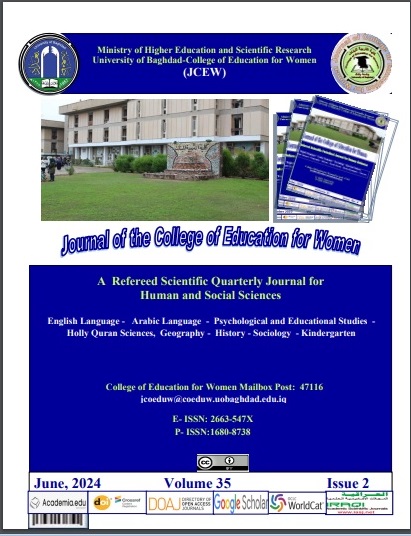A Differential Performance in the Ability Difference to Employ Test Wiseness Strategies According to Contemporary Measurement Theory
DOI:
https://doi.org/10.36231/coedw.v35i2.1744Keywords:
Differential Performance, Test Wiseness Strategies, Andrich Model, Contemporary Measurement TheoryAbstract
The current research aims to utilize the Andrich Model, described as one of the Polytomous models, within the framework of Contemporary Measurement Theory. It focuses on differential performance based on the ability to employ test-wiseness strategies. To achieve this goal, the researcher relied on the Test-Wiseness Scale prepared by (Hamad 2010). A stratified random sample of (447) male and female students from the tenth, eleventh, and twelfth grades was selected. The assumptions of the Item Response Theory (IRT) were verified, including the one-dimensionality assumption. This was done through factor analysis of the test items using Principal Components Analysis (PCA) for individuals' responses to the test items. The Eigenvalue, explained variance, and cumulative explained variance for each factor were calculated. It was found that there was one factor with a meaningful interpretation for the scale, and through this assumption, the local independence assumption was also confirmed. To analyze the data of the scale items, the researcher used the Andrich Model and employed computer software (ConstructMap-4.6). The estimated item location values on the latent trait indicated that they ranged from (2.55) to (2.71) logits, with an average of (0.027) logits. This suggests that the scale covers a wide range of the measured trait, from low to high levels of ability. Furthermore, the standard error for the mean of the item difficulty estimates was (0.032), which is a low value close to zero. This indicates the accuracy of the item location estimates on the latent trait of wisdom.
Downloads
Published
Issue
Section
License
![]()
All articles published in Journal of College of Education for Women are licensed under a Creative Commons Attribution 4.0 International License.











